Involuntary commitment, civil commitment, or involuntary hospitalization/hospitalisation is a legal process through which an individual who is deemed by a qualified agent to have symptoms of severe mental disorder is detained in a psychiatric hospital (inpatient) where they can be treated involuntarily. This treatment may involve the administration of psychoactive drugs, including involuntary administration. In many jurisdictions, people diagnosed with mental health disorders can also be forced to undergo treatment while in the community; this is sometimes referred to as outpatient commitment and shares legal processes with commitment.

Psychiatric hospitals, also known as mental health hospitals or behavioral health hospitals, are hospitals or wards specializing in the treatment of severe mental disorders, including schizophrenia, bipolar disorder, eating disorders, dissociative identity disorder, major depressive disorder, and others.
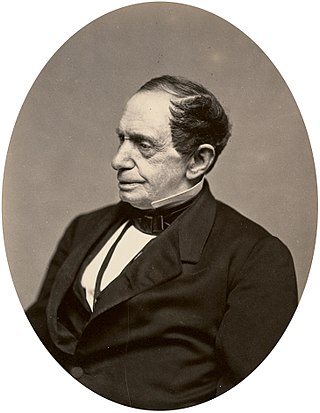
Johns Hopkins was an American merchant, investor, and philanthropist. Born on a plantation, he left his home to start a career at the age of 17, and settled in Baltimore, Maryland, where he remained for most of his life.

William Tuke, an English tradesman, philanthropist and Quaker, earned fame for promoting more humane custody and care for people with mental disorders, using what he called gentler methods that came to be known as moral treatment. He played a big part in founding The Retreat at Lamel Hill, York, for treating mental-health needs. He and his wife Esther Maud backed strict adherence to Quaker principles. He was an abolitionist, a patron of the Bible Society, and an opponent of the East India Company's inhumane practices.

Enoch Pratt was an American businessman in Baltimore, Maryland. Pratt was also a committed active Unitarian, and a philanthropist. He is best known for his donations to establish the Enoch Pratt Free Library in Baltimore and expanding the former Sheppard Asylum to become The Sheppard and Enoch Pratt Hospital,, located north of the city in western Towson, county seat of Baltimore County. Born and raised in Massachusetts, he moved south to the Chesapeake Bay area and became devoted to the civic interests of the city of Baltimore. He earned his fortune as an owner of business interests beginning in the 1830s originally as a hardware wholesaler, and later expanding into railroads, banking and finance, iron works, and steamship lines and other transportation companies.
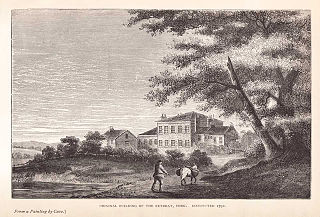
The Retreat, commonly known as the York Retreat, is a place in England for the treatment of people with mental health needs. Located in Lamel Hill in York, it operates as a not for profit charitable organisation.
Moral treatment was an approach to mental disorder based on humane psychosocial care or moral discipline that emerged in the 18th century and came to the fore for much of the 19th century, deriving partly from psychiatry or psychology and partly from religious or moral concerns. The movement is particularly associated with reform and development of the asylum system in Western Europe at that time. It fell into decline as a distinct method by the 20th century, however, due to overcrowding and misuse of asylums and the predominance of biomedical methods. The movement is widely seen as influencing certain areas of psychiatric practice up to the present day. The approach has been praised for freeing sufferers from shackles and barbaric physical treatments, instead considering such things as emotions and social interactions, but has also been criticised for blaming or oppressing individuals according to the standards of a particular social class or religion.

Friends Hospital is a psychiatric hospital located in Philadelphia, Pennsylvania, United States.
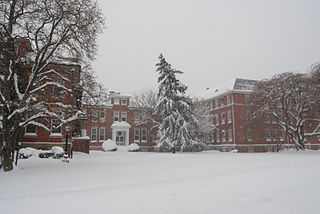
The Crownsville Hospital Center was a psychiatric hospital located in Crownsville, Maryland. It was in operation from 1911 until 2004.

Deinstitutionalisation is the process of replacing long-stay psychiatric hospitals with less isolated community mental health services for those diagnosed with a mental disorder or developmental disability. In the late 20th century, it led to the closure of many psychiatric hospitals, as patients were increasingly cared for at home, in halfway houses and clinics, in regular hospitals, or not at all.

Claybury Hospital was a psychiatric hospital in Woodford Bridge, London. It was built to a design by the English architect George Thomas Hine who was a prolific Victorian architect of hospital buildings. It was opened in 1893 making it the Fifth Middlesex County Asylum. Historic England identified the hospital as being "the most important asylum built in England after 1875".

The lunatic asylum, insane asylum or mental asylum was an early precursor of the modern psychiatric hospital.
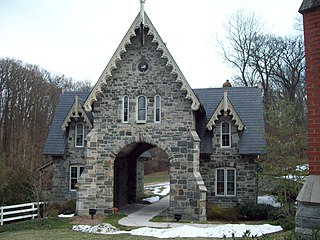
The Sheppard and Enoch Pratt Hospital, known to many simply as Sheppard Pratt, is a psychiatric hospital located in Towson, a northern suburb of Baltimore, Maryland. Founded in 1853, it is one of the oldest private psychiatric hospitals in the nation. Its original buildings, designed by architect Calvert Vaux, and its Gothic gatehouse, built in 1860 to a design by Thomas and James Dixon, were designated a National Historic Landmark in 1971.
William Rush Dunton Jr was a founder and early president of the American Occupational Therapy Association. He is also recognized for his collection of, and scholarship about, American quilts.
Rufus Wyman (1778–1842) was an American physician. He was the first physician and superintendent of the Asylum for the Insane, renamed in 1823 to McLean Hospital, part of the Massachusetts General Hospital system, and the first mental hospital in the state.
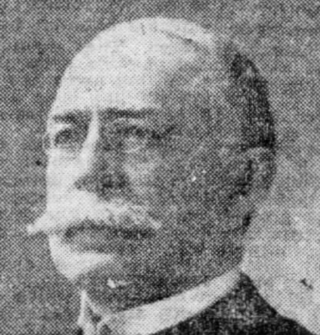
Edward Cowles, an American psychiatrist, was the medical superintendent of the McLean Hospital in Massachusetts from 1879 to 1903. He was among the first hospital superintendents to advocate for hospital functions that encompassed patient treatment, research, and teaching.

Edward Nathaniel Brush was an American physician, a mental hospital administrator, and an editor of psychiatric journals.
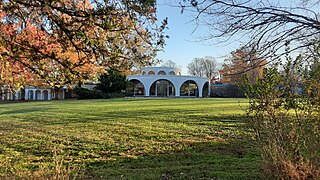
Sheppard Pratt at Ellicott City was a private psychiatric hospital located in Ellicott City, Maryland. It had a 20-bed adult unit, an 18-bed co-occurring disorders unit, an 18-bed crisis stabilization unit, a 22-bed adolescent unit, and an adult day hospital. The hospital was owned and operated by the Towson, Maryland based Sheppard Pratt Health System
The Laurel Sanitarium for Nervous and Mental Diseases was a prominent sanitarium, and later a women's nursing home, and landmark building along U.S. Route 1 in Laurel, Maryland. The sanitarium was founded in 1905 by Dr. Jesse C. Coggins and Dr. Cornelius DeWeese to treat patients with mental illness and addiction. It was converted to a women's nursing home in 1950. The facility closed after Coggins' death in 1963, and was demolished by controlled fire in 1964.















